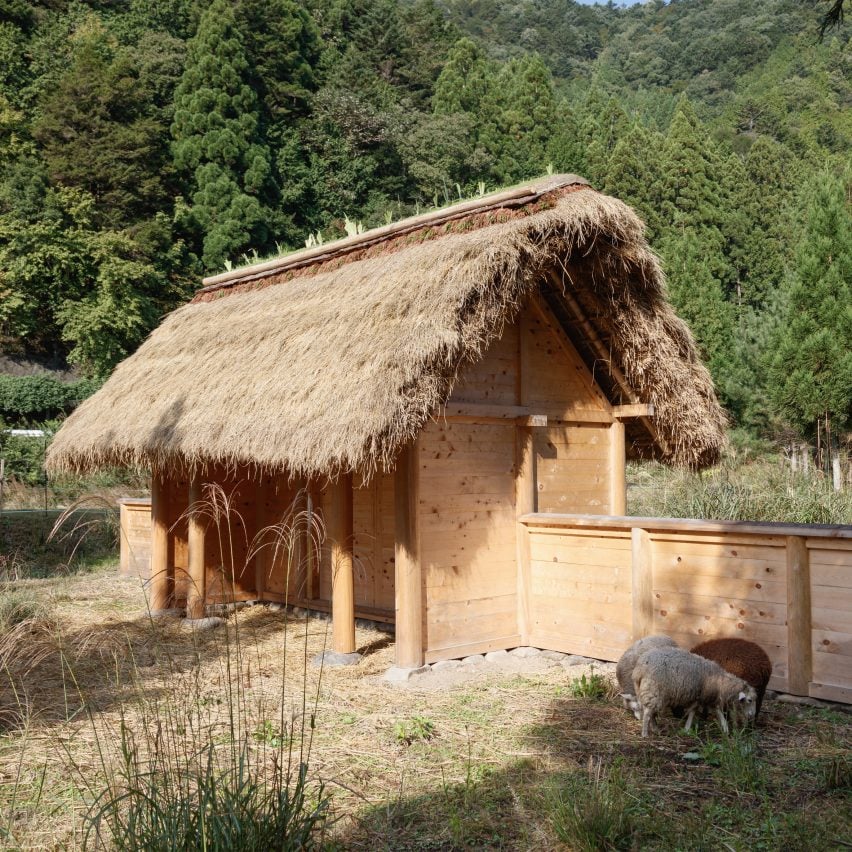A thick thatched roof topped with purple iris flowers shelters this timber sheep pen in Kyoto, Japan, which has been designed by local architecture practice 2m26.
Named Hitsujigoya, meaning sheep pen in Japanese, the wooden hut was designed to act as a gatehouse separating the male and female sheep in a field, providing covered sleeping areas on either side.

Characteristic of many of its projects, 2m26 used the structure to experiment with natural materials and traditional techniques, using hand-shaped logs and a rice-straw thatched roof that would eventually “go back to the earth”.
“In order to be able to separate land in half we designed a huge door, which also fit within the farm’s land rules, as it is not possible to build a proper room with four walls,” 2m26 founders Mélanie Heresbach and Sébastien Renauld told Dezeen.

“Because this land is accessible only by foot, we wanted a building which would go back to the earth if humans stopped maintaining it,” they added.
“All the materials we use come from land itself (stone, wood, straw, bark, bamboo), except the hinge, which we ordered from our favourite blacksmith.”
The structure of Hitsujigoya was made using local cypress logs, which were assembled by hand using traditional joinery techniques atop stone foundations.
The thatched roof was made using a traditional method that involves creating layers of rice straw attached to bamboo nets, which are then covered with layers of cedar leaves, cedar bark and soil.

In reference to their own position as French architects working in Japan, 2m26 topped the apex of this thatched roof with Japanese roof irises, flowers that were historically grown on thatched roofs in Japan, France and China.
This feature is thought to have emerged due to strict land restrictions, and possibly also as a means of binding the roof with the irises’ large root systems.

“A small hint to the French/Japanese connection is the top part of the roof which, in common with the two cultures features soil to prevent leaks and exactly the same type of iris to fix the soil with roots,” Heresbach and Renauld said.
The thatched roof covers the central gateway and pen areas, framed by hand-shaped cylindrical timber columns, while on either side, two sections of low wall help to divide the field.
2m26 has previously completed several small structures exploring traditional Japanese materials and construction methods, including a mobile ramen restaurant informed by traditional food carts, and a chicken coop that references Japanese shrines.
The photography is courtesy of 2m26.
The post Purple flowers crown thatched sheep pen in Japan by 2m26 appeared first on Dezeen.

